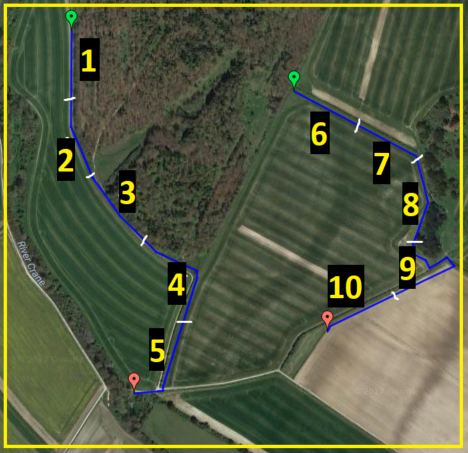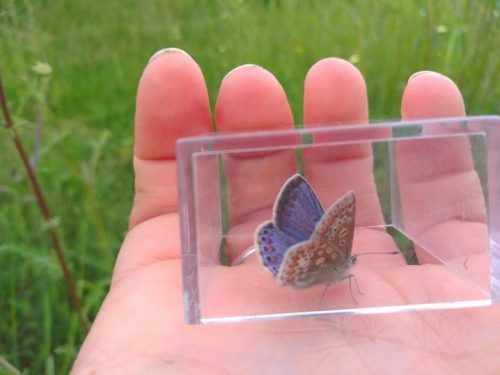Butterflies are worth surveying because they are relatively easy to learn and spot, and species diversity can tell us about the habitat resources present on farmland. Decide whether you are interested in surveying all butterflies, or just one or two species – for example, an uncommon one that you want to encourage.
Butterfly Conservation run a variety of recording schemes which you may like to take part in. Some tried and tested methods are suggested below which have been adapted for use on a Farmer Cluster:
To survey multiple species:
- You will need a butterfly guide, a camera, binoculars, farm field map, notebook or form and a butterfly net if you have one. Plastic specimen tubes/boxes may also be used with care.
- You can take part in Butterfly Conservation’s national ‘Wider Countryside Butterfly Survey’ if you are happy to be allocated a random 1×1-km survey square near you.
- If you want to survey an area of your choice or a landscape-scale area, you can adapt the same method, but design your own permanent transects that you walk 2-4 times a year.
- Using the Ordnance Survey 1-km grid, select alternate squares and identify two 1-km routes running roughly north-south or east-west within each square. Try and include a mix of land uses.
- Divide the two 1-km transects into 5 sections each, so that you end up with 10 transect sections within each 1×1-km square. Sections can be used to differentiate habitats and generate comparisons between land uses.
- Using the same methodology as the Wider Countryside Butterfly Survey:
- Aim to walk the transects 2-4 times per year from May to August. If doing the minimum of 2 visits, choose July and August. It will take 1-2 hours for each square.
- Choose a calm sunny day. You can survey if cloudy, but it must be at least 17°C.
- Record start time and date and conditions. Walk at a steady pace, identifying and counting butterflies in a 5-m radius zone around you.
- Make a tally of butterflies seen per section, making a note of % sunshine during each.
Over the years you can compare the abundance and species diversity for the whole transect and within transect sections.
A 1km survey square with two 1km butterfly transects inside, split into 10 sections
To survey one species:
- You will need a butterfly guide, a camera, binoculars, farm field map, and a butterfly net if you have one. Plastic specimen tubes/boxes may also be used with care.
- You will need to find out the following about your chosen butterfly:
- Its identification features – species within some groups such as blues and fritillaries can be easily confused.
- Its caterpillar foodplant – adults are often seen nearby, as they lay eggs on them.
- Its flight period.
- The type of habitats it is likely to be seen in.
- Search likely habitats at the right time of year, in calm sunny conditions, and look for clusters of foodplants. Identify your butterfly using binoculars or stalk up to it. Record new colonies.
- If you can’t get close enough, use a net to catch it and gently place a clear specimen tube over it to see its features. Get pictures if the species is uncommon.
- You can monitor colonies over time by walking one or more 200-m transects across the habitat in favourable weather twice during its flight period, and seeing how the maximum number across visits varies from year to year. If you are surveying small or awkwardly-shaped parcels of habitat, you could design a circular or winding 200-m transect, as long as you do not survey the same features.
Using a clear plastic specimen box to examine butterfly ID features © Jess Brooks


